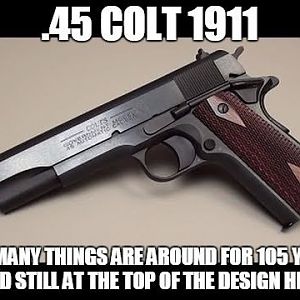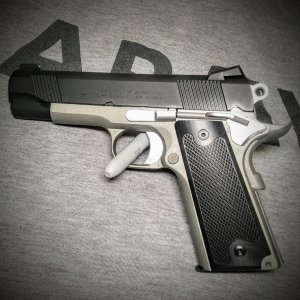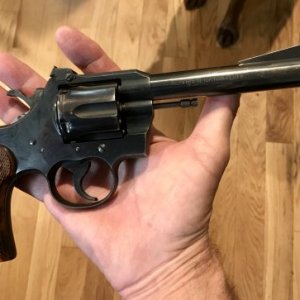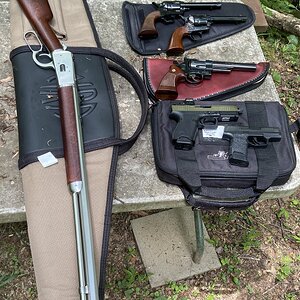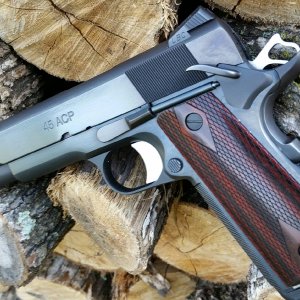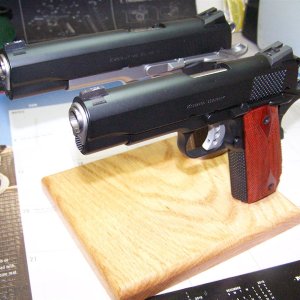Many deer hunters cringe at the thought of having to butcher and prepare a deer for the freezer. While I am far from an expert at the task, I do know the basics of getting my animal from the field to the freezer. Your first task is to make sure the deer is properly field dressed and cleaned before you leave the kill site. Too many hunters neglect to do a good or safe job of field dressing and that can cause problems for the person doing the meat processing, regardless if it is the hunter or a local butcher.Your meat must be stored properly following the hunt as well (hang the meat in a cool and dry place). If the weather turns above fifty degrees or so, I always head home earlier than I may have intended to, simply because I don’t want the meat to get too hot and sour. While we have all heard of aging meat to perfection, a process that keeps the meat a few degrees above freezing for a few days, hot weather will ruin it.
If you want to hang your meat, I suggest you keep it in a controlled environment, less than fifty degrees, cool and dry, and that you not hang it for longer than seven days. I have known old timers who would hang meat for longer periods of time, but I don’t think it is necessary. My brother only hangs his deer for five days and his is always tender. Keep in mind, the purpose behind hanging the meat is to let the chemicals that breakdown within the meat (as it ages) assist in tenderizing the meat, and I have never exceeded seven days with any deer I have taken.
The four basic tools used for butchering are simple around the house tools. You will need a good sharp skinning knife, a wet stone to keep the knife sharp, a hacksaw, and perhaps rubber gloves for your hands (and a cutting board of course). The reason I have added rubber gloves to the tools list is for the sake of cleanliness, not necessarily for safety. Some folks don’t like to get blood on their hands and it does make personal cleanup easier (and they can be removed quickly to answer the phone!). But, I don’t like to use gloves because I feel a loss of dexterity, but it could be more of a habit than anything else. I also keep a large trash bag around for tossing trimmed pieces of bloodshot meat and fat. As you process the animal, keep your work area as clean as you can.
Some folks like to have two or three sharp knives available before they start to butcher. Once again my old habits come in, I prefer to use my favorite knife, but I do stop very frequently and touch up the blade to keep it sharp. A dull knife will not only make the job harder, which means more time to complete the job, it is also more dangerous to us, simply because a dull knife can slip or require additional pressure to use. Finally, make sure all of your tools are cleaned well with soap and water before you start.
It is important before you start any butchering that you find out about chronic waste disease (CWD) in the area where you harvested your deer. CWD is widely spread in the three corners area of Colorado, Wyoming, and Nebraska, and it has been identified in Illinois, Wisconsin, and New Mexico among other regions. Since accurate testing can only be done in approved labs (the disease is a neurological one) you should use extra caution to avoid leaking any spinal fluids or coming in contact with any brain tissue as you process the meat. If you need specific questions about CWD answered, contact your regions fish and game agency.
Before butchering a deer it is important to have a basic understanding of how the animal’s skeleton holds the body together. The rear legs of your deer are jointed and fit into a socket in the deer’s hip (#1 in the illustration below). The front legs fit onto the chest mainly by the use of muscles and tendons. You will find the front leg bones inside the animal are flat, or slightly curved (#2 in the illustration below). The rest of the animal basically consists of the ribs, neck and spine.
The first step of the actual butchering process is to take your hacksaw and cut the carcass in half (This step is not recommended deer harvested from a region that has CWD). Saw as close to right down the middle as you can. Don’t worry if the cut is not perfect, no one will ever notice. At this point, make sure you wipe off any small particles of bone that the saw blade may produce. This will keep your meat from being covered with small bits of bone. Wipe off the sawed area with a damp piece of cloth, not one that is soaked with water. Pat the washed meat with a dry cloth to keep it dry.
 If your state has CWD concerns with its deer herds, or you just want to be safe, simply leave the ribs attached to the rib cage (and spinal column) and discard that part of the skeleton whole. Just be sure to remove any meat from the ribs before you throw it away.
If your state has CWD concerns with its deer herds, or you just want to be safe, simply leave the ribs attached to the rib cage (and spinal column) and discard that part of the skeleton whole. Just be sure to remove any meat from the ribs before you throw it away.
Next, remove the rump from the animal and remember the rear legs are jointed and may take some time to find the joint. If you move the leg before you start cutting you may have a better feel of where the joint is actually located. Don’t rush this step, take your time and find the joint. Cut around the joint and remove the ham shaped rear leg. I usually use the upper portion of the leg “ham†to cut round steaks (#1 in illustration below) and the lower portion to make a pot roast (#2 in illustration below). Keep in mind, the lower on the animal’s legs you go, the tougher the meat will be. You can use your knife to cut the steaks to the thickness you like and then use the hacksaw to cut through the bone. Try for uniform thickness and cut as straight as you can. It makes the steak much more appealing to the eye. Also, during your butchering, try to make smooth cuts and not jagged cuts (remember, you should be cutting, not sawing the meat). The smooth cuts are easier to make and they also make the meat look better when you are finished with the job.
 In my next step I remove the loin (or sometimes called the back-strap in some areas), which runs down both sides of the deer’s spine. To me, this is the choicest cut on the whole animal. I run the knife blade down, and long the edge of the spine bones all the way to the top of the neck. Then I cut even with the bottom of the spine bones to produce a long, somewhat narrow, piece of meat (from each side of the animal). I usually cut the loin in two or three pieces (from each long loin) for easier cooking.
In my next step I remove the loin (or sometimes called the back-strap in some areas), which runs down both sides of the deer’s spine. To me, this is the choicest cut on the whole animal. I run the knife blade down, and long the edge of the spine bones all the way to the top of the neck. Then I cut even with the bottom of the spine bones to produce a long, somewhat narrow, piece of meat (from each side of the animal). I usually cut the loin in two or three pieces (from each long loin) for easier cooking.
After I have prepared the loin, I remove the front legs by following the round part of the leg up and once it enters the chest area, I start cutting with my knife between the leg and the chest muscles. When I feel the bone start to flatten out I lift the partially removed leg and cut the remaining meat around the flat portion of the bone from the chest underneath. I usually cut the front “hams†in two and save them as pot roasts.
I trim the neck meat and meat near the leg joints for use in stews. I also remove as much of the less than choice meat for the same purpose at that time. This meat may be from around the chest, spine, or other areas. I want to use as much of the animal as I can for processing. I dislike hunters who waste meat of any game they have taken.
Keep in mind the loin with the spine intact can be cut into chops if you want to take the time and effort to do so (this is not recommended in CWD areas). I just dislike using the hacksaw anymore than I absolutely have to during the butchering process. I find cutting bone a hard job and I am not much of a chop eater anyway. But, if you want chops, cut them to the thickness you want with your knife to the bone and then use the hacksaw to cut the rest of the way through. I suggest you also remove the ribs before you start making chops. I usually remove the ribs whole, one side at a time. For me, since I don’t make chops, I do the rib removal toward the end of the butchering process. Some folks prefer to remove individual ribs, but once again, I don’t do that unless I plan to eat those immediately. I like the look of a full rack of ribs on the grill.
If you hold a piece of meat in your hand, you can actually see how the “grain†or tissue fiber grows in the meat. You can see the tissue growth up a deer’s leg very well, so cut across the leg, to make these fibers shorter. If you cut with the grain, the meat will be very tough and difficult to eat (because the fibers will be longer). The shorter the “fibers†of the meat are the more tender the cuts will be. Commercial meats are cut against the grain so that the meat is tender and yours should be cut the same way.
The following illustration will give you an idea of how the meat should be butchered. It is fairly easy to do, but you must have a good understanding of where the bones are as well as where your cuts will be, before you pick up a knife.

- Shows where the “hams†can be cut in two to make pot roasts.
- This is the rump and where most of your round steaks will come from.
- The loin chops can come from this section of the animal.
- You can remove the loin strips from both sides of the spine.
- The neck meat can be removed and used in stews or soups.
- I use the meat from the belly and lower ribs for soups.
- The front leg can be cut in half for pot roasts, or if you like to saw, you can make smaller steaks.
Make sure you wrap the meat in a good quality butcher paper. I usually double wrap, and mark the contents of each wrapper (i.e., steaks, loin, pot roast). I also date the packages and try to use them within six months. I have known people who have kept the meat much longer in a freezer, but I think if the meat is kept frozen too long a lot of the flavor is lost. And, remember to rotate your wild game in the freezer so you eat the older meats first and the fresher meats last.
Additionally, I usually use part of any large game I take, deer, moose, caribou, or elk, and make some jerky out of it. I will generally use one rear leg for jerky because I have discovered that kids love it! There are commercial jerky making kits available on the market (in most sporting goods sections) with everything you need, except the meat, and I recommend them for the first timer. Just make sure any meat used for jerky is cut as thin as possible and free of any fat. Also, when making jerky in the oven, keep the temperature as low as you can. It takes hours to make jerky in an oven, or you can use a dehydrator if you have one.
Or, if you feel really ambitious, you can get a meat grinder and pick up some sausages casings and make your own sausages. If you decide to make sausages, you will need to swing by the local butchers and pick up some beef fat to add to the mixture. I have found deer to be too lean to make a good sausage on its own.
By the way, you can expect less than 50 percent (some hunters say even less) of your deer’s total live weight by the time you finish the butchering job. I have often heard other hunters who took a deer to a professional butcher complain about how little meat they actually got back. Most of the live weight of a deer comes from the innards and bones, and little actual meat is on a typical deer But, the meat you find on a deer will be extra lean, usually, and a much healthier choice for all meat eaters.
So, this year why not give butchering your game a try? It is not that difficult of a task, as long as you take it slowly and know how all of the bones fit together. Remember to keep your cutting tools sharp and clean. Additionally, consider your cuts before you make them and understand the importance of cutting across the grain of the meat. I suspect any hunter can butcher a deer, but like a lot of things in life, it is just intimidating to get started. It’s all in the sport, give it a try and save a few dollars in the process. Who knows, you may even enjoy doing it, I do.
____________________
Source - Big Game Hunt

